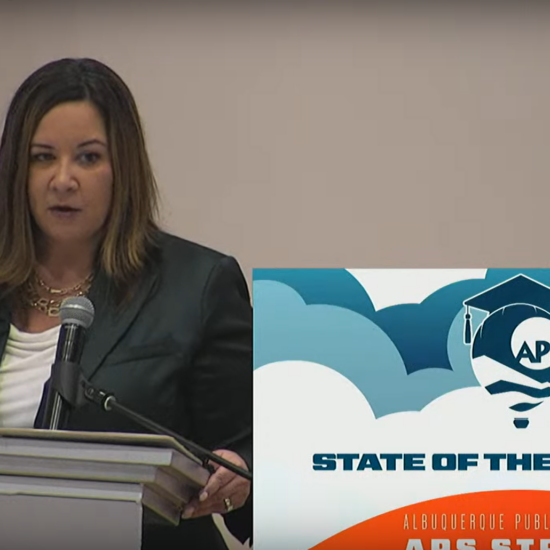
The New Mexico Public Education Department hopes to improve student achievement in English Language Arts, mathematics, and science across the state by using tools that have been shelved since 2019, but are getting new life in the form of a new website. The renewed effort will study schools in New Mexico to see where students are performing well and where they are struggling, so that success can be replicated and low performing schools can improve.
Prior to the COVID-19 pandemic, PED used a tool called New Mexico Vistas to evaluate school performance and monitor student progress. In 2019, the state moved away from using the tool and has since seen student proficiency rates decline across ELA, math, and science. Vistas is now a new website with a fresh look.
Vistas is being updated to determine what training and resources need to be put into which schools to promote educational equity, helping prevent any student group or school from falling behind the rest of the state. Vistas will help community members understand how schools in their area are performing, and give parents a better idea about the level of education their child is receiving. With this information, parents will be able to make informed decisions about their child’s education.
Currently, Vistas is using data from the 2021-22 school year. In January, the data will be updated to reflect the 2022-23 school year.
PED is seeing support from education advocates since announcing the return of Vistas. “A strong educational system includes transparency of data and accountability. We know these tools help improve student outcomes, because New Mexico was on the rise when we had a quality accountability system in place.” said Hope Morales, executive director of Teach Plus New Mexico said. Education Secretary Arsenio Romero said New Mexico needs to take control of its own story on education. He outlined several priorities to address the state’s education crisis, with data collection being one of his biggest priorities. Vistas promises to be one such tool by organizing data on proficiency and learning growth from the state tests students take annually, and other data points like attendance and graduation rates. Romero said that once the state has this data, it will be better equipped to allocate resources and promote improvements in schools.
How will schools be rated?
PED hopes to improve the state’s education system by restarting a system to evaluate school performance and intervene with necessary supports. To determine which schools need extra support, PED uses a “School Accountability Index” that takes a school’s proficiency rates in ELA, math, and science; proficiency improvement rates; and attendance scores to determine where on the scale a school falls. Each school is assigned a score which is highlighted on their Vistas webpage.
Under this system, PED will be able to assign training to schools and districts, and if necessary, take action as drastic as closing a school to help improve academic achievement.
Academically successful schools will be given the designation, “Spotlight School.” Only schools that score above the 75th percentile will receive this title.
Schools that are not identified as needing additional support nor “Spotlight” will be identified as, “Traditional Support Schools.”
Schools with one or more student groups significantly under-performing will be identified as, “Targeted Support and Improvement (TSI)” schools.
Schools with one or more student groups under-performing to the point where they do worse than the lowest scoring five percent of Title I schools will be identified as “Additional Targeted Support and Improvement (ATSI)” schools.
“Comprehensive Support and Improvement (CSI)” will be a more severe designation. “Comprehensive Support and Improvement” will be assigned to schools that:
- Were previously identified Additional Targeted Support and Improvement and have failed to meet state mandated benchmarks for improvement.
- Serve high school students and have a four-year graduation rate of less than 66.67 percent.
- Are in the bottom five percent of all schools.
If a CSI school fails to meet its state mandated benchmarks to improve, they will be identified as “More Rigorous Intervention” (MRI). If an MRI school does not successfully meet its state mandated requirements for improvement, the state will consider the school as having “Demonstrated persistent failure” and “PED will require more forceful restructuring, such as requiring staffing changes, ‘restarting’ the school with a proven operator, or working with a district or authorizer to close the school by 2027,” according to a PED presentation about Vistas.
What happens with low-performing schools?
Low-performing schools will be provided additional funding to support their improvement efforts. This funding will come in the form of grants to support the strategic improvement planning.
Each school identified as TSI, ATSI, CSI or MRI will be required to participate in a readiness assessment that will determine the root causes of issues at the school. In a presentation about Vistas, the PED said this assessment is to help improve the school and not judge or demoralize the school staff.
Using a 2010 study, PED found that school principals spend less than six percent of their time observing, coaching, and evaluating teachers. To help principals become better teacher-leaders, PED will mandate that all schools with the More Rigorous Intervention designation have a performance coach who will offer advice, implementation advice for new strategies, and a virtual coaching session each month.
Schools do have the ability to appeal their designation. Details on the appeals process were unavailable by press time.
If you have used Vistas, let us know your experience. Email diego.lopez@nmeducation.org with your feedback.







